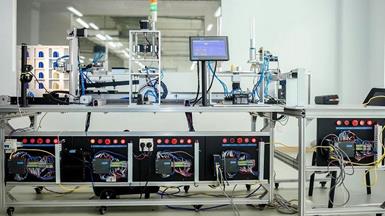Why Security is Becoming More Important
2019/3/10


Although connectivity allows one to more easily access all network components, perform monitoring tasks, and troubleshoot any problem on a network, it also provides a means for unscrupulous attackers to obtain trade secrets or even money. Such open connectivity also means that even local networks are no longer closed and safe, and as the number of people relying on a network to perform their job duties increases, the level of remote access permission that is required will continue to grow as people become more dependent on cloud services.
Information shown on monitors and panels in control rooms is derived from data received from upstream edge components. This provides an opportunity for hackers to intrude a network via the edge components or switches/routers in a typical bottom-up intrusion, which, in addition to potential loss of trade secrets, can lead to a range of system problems resulting from zombie attacks, distributed denial-of-service (DDoS) attacks, or spoofing. This is why security continues to be of great concern in IIoT applications. Hence, determining the means to detect, predict, and prevent an intrusion or attack is the key point of cyber security.



/EKI-7708G-4F_Front left _S20171127175806.jpg)
/EKI-7716G-4F4CI_Front _B20180326140056.jpg)
/EKI-7708G-4F_Front left _S20171128093054.jpg)
/EKI-7720E-4F_4FI_S20160921104037.png)
/EKI-7428G-4CI_S20160428111941.png)
